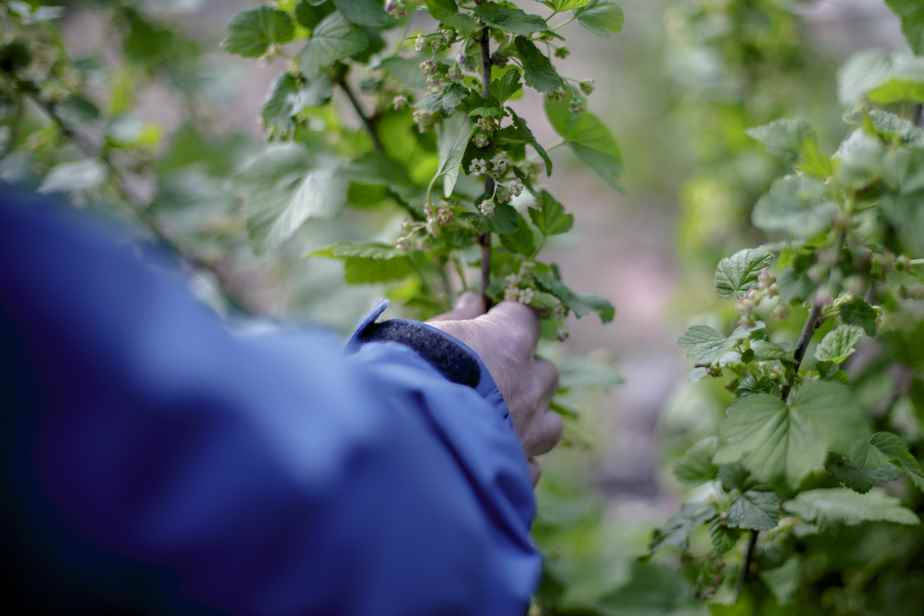Strawberries, raspberries and blueberries need no introduction. But other small fruits also deserve to make our summers happy. Less cultivated, they are more rare in the markets, but many of those who grow them receive the pickers. To your little baskets!
Posted at 11:00 a.m.
Haskaps everywhere

PHOTO PROVIDED BY FERME MANICOUAGAN
Haskaps
Haskap is undoubtedly the small fruit whose popularity is growing the fastest in Quebec. The cultivation of edible honeysuckle is very recent, however, the first promising varieties having only appeared in the 1990s, underlines Agrinova. Its cultivars resist very well to cold and can grow almost anywhere in Quebec. The Manicouagan farm, on the Lower North Shore, has 40,000 plants. “With our cold nights, our fruits develop more sugar,” says Julie Bérubé, co-owner of the farm. Its taste is reminiscent of blueberries and raspberries. Without a pit, it is eaten plain, she adds, to the great delight of the self-pickers expected from mid-July. A good part of the farm’s production is frozen to be processed on site, but also elsewhere, such as at the St-Pancrace microbrewery. Haskap also makes delicious mousses, pies and jams. On July 23, on the occasion of Camerise en fête, the Manicouagan farm will welcome several companies that use the fruit for an outdoor tasting.
Versatile serviceberries

PHOTO JACQUES BOISSINOT, CANADIAN PRESS ARCHIVES
Saskatoon berries
Serviceberry is a shrub native to North America. The First Nations used it in the preparation of pemmican, and the first settlers, who quickly adopted it in Quebec, baptized its fruit “little pear”. In the West, this fruit – called saskatoon – is more popular than the blueberry. David Côté planted his first serviceberries a little over 20 years ago, at Jardins Abbotsford DC, in Montérégie. “An old friend, Gonzaga, told me about it,” he said. The shrub also serves as a windbreak for our greenhouses. » But the good taste of serviceberry berries (or saskatoon berries), close to that of blueberries with a hint of almond, in coulis, jams, jellies, in sorbet or even in a sauce with a flank steak, the seduced. The fruits of its 600 plants will be ripe in early July, and visitors will be able to pick them for three weeks, thanks to nets that prevent birds from devouring them all. In town, there are many serviceberries whose fruits are just waiting to be picked (with the permission of their owner, of course).
The unique aroma of blackcurrants

PHOTO MATHIEU BÉLANGER, LA PRESSE ARCHIVES
Cassis
Even if it is relatively little cultivated in Quebec, the blackcurrant enjoys a good reputation, in particular thanks to the company Cassis Monna & filles, in Île d’Orléans, which makes wines, syrups, jams , etc. Captain Noël’s Farm also produces and processes this fruit that some call “black currant” in the east of the island. At Couleurs cassis, in Saint-Antoine-sur-Richelieu, near Montreal, Martin Laporte has been growing 7,000 blackcurrant plants for ten years. “I wanted to do something other than strawberries and raspberries,” says the man who sells most of his production to microbreweries, including Auval. “And I like the taste of blackcurrant. The pronounced and unique aromas of blackcurrant are very popular with Europeans, especially those from Eastern countries. “They often macerate the fruit with a few leaves,” says Martin Laporte. Otherwise, pickers mainly make jams and jellies. The harvest generally begins in the last week of July at Couleurs cassis and lasts a maximum of two weeks.
Precious cherries

PHOTO TAKEN FROM THE FACEBOOK PAGE OF LA CERISAIE PASSIONS CERISES
Morello cherries
“I’ve always loved cherry pies! says Daniel Fréchette, from the Passions Cerises cherry orchard, which has 1,500 sour cherry plants in Bury, east of Sherbrooke. He has been growing this little fruit for 10 years now, with a more tart taste than that of the Bing (or French) cherry, which grows better in Ontario and British Columbia. The varieties grown at the cherry orchard were developed in Saskatchewan and are very hardy. But they remain sensitive to large temperature differences, especially during flowering. Last year, a spring frost wiped out the harvest, but this year pick-your-own will begin in mid-July. “The harvest lasts a month,” explains Mr. Fréchette. Some are surprised by its taste, less sweet than the French cherry, but the morello cherry is eaten very well like that. Pickers come to collect them to put them in alcohol, but you can also make jam, coulis… and pies! »
Find gooseberries

PHOTO WIKIMEDIA COMMONS
Gooseberry
“We have gooseberry plants here that date back to my grandfather’s time,” says David Desmarais, of the Desmarais farm in Pierreville, in the Centre-du-Québec region. People like to pick them, even if the plan has long thorns. “With only fifty plants, the harvest, which begins at the end of July and lasts two weeks, is limited to 10 or 20 peaks per summer, continues the producer. Gooseberry fruits, which turn from green to red as they ripen, are eaten raw and make an excellent jelly. “Green fruits contain more pectin, and red ones are sweeter,” says Desmarais. Cultivated especially in England since the XVIe century, the gooseberry was as popular as the raspberry or the strawberry before the 1940s in Quebec, writes historian Michel Lambert, but an illness almost made it disappear. Producers are scarce, but the plants are now more resistant to disease and require little maintenance, notes David Desmarais. “People can easily grow it at home! »

